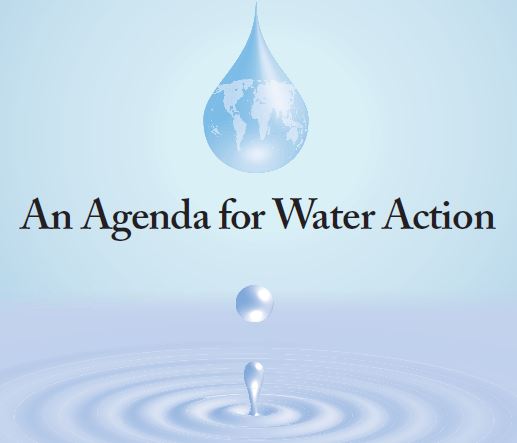Making Every Drop Count, An Agenda for Water Action
Pressure on water is rising, and action is urgent. Gaps in access to water supply and sanitation, growing populations, more water-intensive patterns of growth, increasing rainfall variability, and pollution are combining in many places to make water one of the greatest risks to economic progress, poverty eradication and sustainable development. Floods and droughts already impose huge social and economic costs around the world, and climate variability will make water extremes worse. More troubling, if the world continues its current path, projections suggest that we may face a 40% shortfall in water availability by 2030. The consequences of such stress are local, national, transboundary, regional, and global in today’s interconnected and rapidly changing world, with consequences that will be disproportionately felt by the poorest and most vulnerable. Addressing these issues poses one of the greatest challenges facing the world. Many of these challenges are captured in the Sustainable Development Goals (SDG). SDG6, the ‘Water SDG’, calls for progress around water supply, sanitation, water quality, water efficiency and scarcity, integrated water resources management, water and the environment, increased international cooperation, and involvement of communities in the management of water and sanitation. Water is the common currency which links nearly every SDG, and it will be a critical determinant of success in achieving most other SDGs – on energy, cities, health, the environment, disaster risk management, food security, poverty, and climate change among others. The HLPW’s key message is that the world can no longer take water for granted. Individuals, communities, companies, cities, and countries need to better understand, value, and manage water. The HLPW articulates an agenda at three levels: 6 A foundation for action. To take effective action we need to understand the importance of the water we have, and therefore must invest in data; we need to value the water we have, in its social, cultural, economic and environmental dimensions; and we need to strengthen water governance mechanisms so that we can effectively manage it. 6 Leading an integrated agenda at the local, country and regional levels. Water flows across political and sectoral boundaries. The Panel therefore calls for an integrated approach, including sustainable and universal access to safe water and sanitation, building more resilient societies and economies, including disaster risk reduction, investing more and more effectively in water-related infrastructure, appreciating the centrality of environmental issues, and building sustainable cities and human settlements. 6 Catalyzing change, building partnerships & international cooperation at the global level. The Panel recommends progress in encouraging innovation, promoting partnerships, increasing finance, increasing institutional support, strengthening the global and international water cooperation, and seizing the opportunity to take action with the Water Action Decade before us. The HLPW, as political leaders, commit to leading change in these areas, and have identified specific recommendations and new initiatives for action, which are summarized in the following table and the report. The Panel calls on leaders and all stakeholders to join together in pursuit of safe water for all, managed sustainably.
